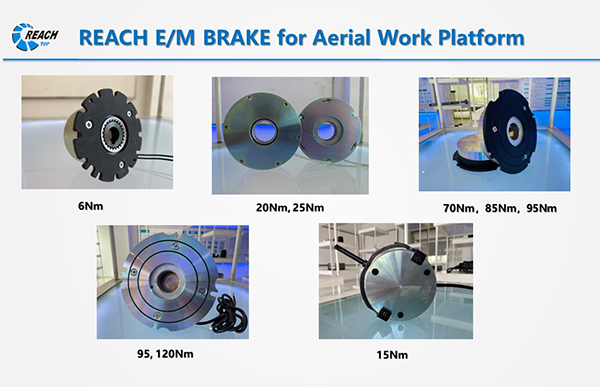Contact: sales@reachmachinery.com
In the Aerial Work Platform (AWP) industry, the requirements for brakes are critical to ensure the safety of operators and bystanders.
So, what are the key requirements for brakes in Aerial Work Platform (AWP) industry?
- Reliability: Aerial Work Platform (AWP) braking systems must be highly reliable and able to perform consistently under varying weather and road conditions. They should be designed to withstand extreme temperatures, humidity, and other environmental factors.
- Efficiency: Aerial Work Platform (AWP) braking systems must be highly efficient, able to bring the vehicle to a complete stop quickly and smoothly. This is especially important in emergency situations, where the ability to stop the vehicle quickly can mean the difference between life and death.
- Durability: Aerial Work Platform (AWP) braking systems must be built to last, able to withstand the heavy usage and demands of the industry. They should be designed to require minimal maintenance, with parts that can be easily replaced if needed.
- Safety: AWP braking systems must be designed with safety in mind. They should include features such as anti-lock braking systems (ABS), electronic stability control (ESC), and other advanced safety features that can help prevent accidents and reduce the risk of injury.
- Compliance: AWP braking systems must comply with all relevant regulations and standards, including those set by the International Organization for Standardization (ISO), the Society of Automotive Engineers (SAE), and other regulatory bodies.
Reach Electromagnetic brakes for Aerial work platform
REACH’s spring applied electromagnetic brakes are widely used into drive unit of the Aerial work platform, the brakes have small size, high braking torque, high protection level and strict life testing, which can ensure the safety and reliability of these vehicles.
Post time: May-08-2023


